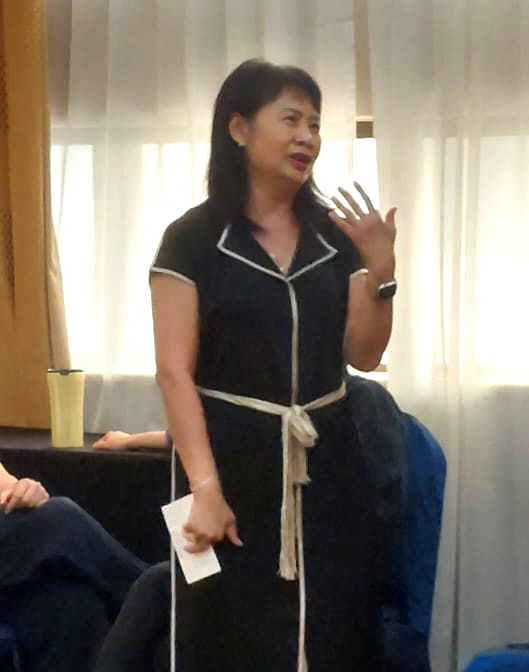The Transformative Journey of Personal Healing through Somatic Experiencing
- Rose Faquir

- 3 days ago
- 3 min read
Updated: 2 hours ago
I am grateful to have graduated from the Somatic Experiencing (SE) course on November 4. It has been a meaningful journey, personally and professionally.
When I graduated in 2010, I learned to help my clients uncover and bring to the surface their traumatic experiences. But I found it caused them more pain and difficulty in their daily functioning, while they go through the healing process.
Then I discovered EMDR, which taught me the importance of working with individuals beyond their frontal cortex, thereby enabling access to the problematic, traumatic memories stored in the limbic system. I have been practising EMDR for 8 years and witnessed transformation in many of my clients. However, I also found that some of the individuals I work with have difficulty receiving EMDR because they are so frozen in their bodies and cannot access their emotions and sensations.
With an aptitude for lifelong learning, I search and attend more training to find out how I can help some of my clients overcome the "stuckness" I discovered SE.
Through SE sessions (sometimes integrated with EMDR), I have witnessed numerous clients overcoming the "frozen" bodily sensation. I am also thankful to be able to support two of my clients whose specific traumatic experiences remain untouchable despite progress in other areas, and to eventually be able to work on their particular traumatic events after several SE sessions. I cannot adequately describe the sensation I felt when I witnessed their breakthrough.
I also went through SE personal sessions. I am a self-regulated, experienced trauma therapist with a sound support system. Yet, I discovered at least several trauma residues stored in my body. One of them was the constant pain in my right shoulder, which I found to be connected to the several accidents I suffered, resulting in the nerve on my right side unable to function as it usually would.
During our graduation ceremony, my classmates invited me to represent our cohort in expressing appreciation to the organisers and trainers. After the ceremony, many of them approached me to share how they found my speech to be spontaneous, humorous, and witty - revealing a side of me they hadn't known existed. I attributed it to the SE Touch sessions I had three days before the ceremony, when I felt something released. I remember feeling light and wanting to celebrate.
Years ago, I participated in and won several humorous speech contests. But after a traumatic experience from 2003 to 2006, I could not speak in front of the public for several years. While I eventually regained my confidence and ability to deliver speech and training, I didn't realise that the humorous part remained locked in my body until a few days ago. Those SE sessions with my overseas consultant were transformative. I wouldn't be able to deliver the speech, which I only had 5 minutes to prepare, otherwise. I am thankful.
I am grateful for this three-year journey of learning Somatic Experiencing. I made new friends, found a safe space with my consultants, and healed from my own traumatic experiences. As the consultants emphasised, graduation is not an end, but rather a beginning.
I look forward to many more years of learning, healing, and helping my clients regain their sense of safety and wholeness within their nervous systems.
Rose Faquir
Clinical Director
Restoring Peace
Important to note:
Somatic Experiencing (SE) touch differs from other forms of touch work. SE touch is not massage or muscle work; it is a respectful touch that involves a stationary hold on specific parts of the body, such as the shoulder or joints. The goal is to regulate the nervous system and release the trauma stored in the body. While touch work is powerful, its application in therapy must adhere to ethical, cultural, and religious boundaries. The sense of safety in both the therapist and the clients is essential, so I usually teach our clients to do self-touch and other SE techniques.
SE is not a replacement for EMDR or any other therapeutic modality, nor does SE oppose the use of medication. It is essential to follow their medical prescription when attending the SE sessions. As a Somatic Experiencing practitioner, I utilise techniques aimed at restoring a sense of safety and wholeness to the individuals' nervous systems, which have been affected by trauma and other adverse life experiences. The goal is to help them stay regulated despite life's challenges. This process takes time, and the progress varies among individuals.
Additional Read:










Comments